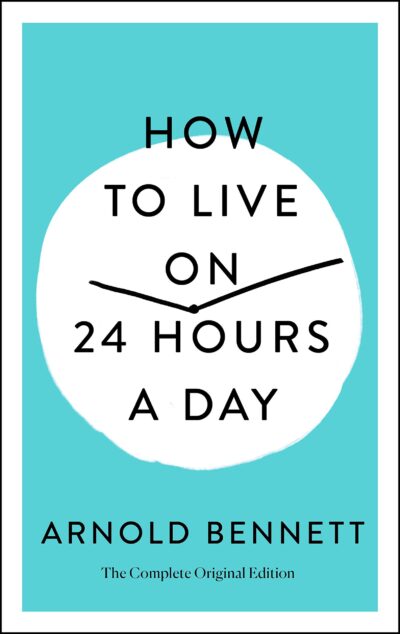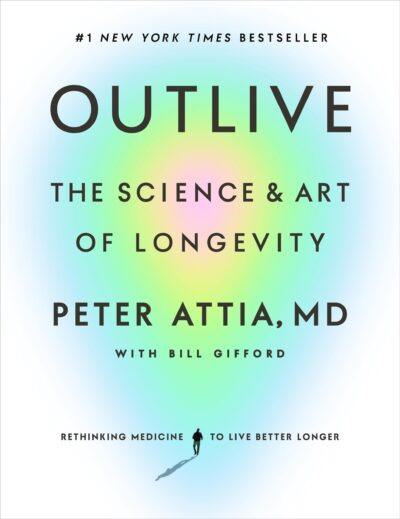68 Results with the "Self-help" genre
Adventure Fiction (1164)
Biography (435)
Business & Finance (1)
Children's Literature (124)
Comics (6)
Culture (51)
Drama (123)
Dystopian (29)
Fable (86)
Fantasy (1132)
Fantasy (203)
Fiction (1010)
Finance (1)
Gothic Fiction (12)
Historical Fiction (615)
History (122)
Horror (56)
Lifestyle (36)
Literary (404)
Literary Fiction (207)
Memoir (113)
Mystery (422)
Non-fiction (87)
Novel (549)
Paranormal Fiction (96)
Philosophical (182)
Philosophy (45)
Poetry (249)
Political Fiction (14)
Politics (42)
Practical (32)
Psychological (4)
Psychological Thriller (108)
Relationship (6)
Romance Novel (716)
Romantic Melodrama (14)
Satire (91)
Science (46)
Science Fiction (345)
Society (65)
Society (2)
Spiritual Growth (1)
story (2)
Thriller (704)
True Crime (56)
view (11)
Women's Fiction (2)
Young Adult (233)
-
 Chapter II introduces the reader to an idea that feels both familiar and frustrating—the sense that there’s never quite enough time to do what one truly wants. The author starts by acknowledging a hypothetical figure who seems perfectly content with how they use their twenty-four hours. This person supposedly balances work, leisure, and self-development without struggle. If such individuals exist, they are rare. Most people, the author argues, feel a nagging sense of dissatisfaction, even when life…
Chapter II introduces the reader to an idea that feels both familiar and frustrating—the sense that there’s never quite enough time to do what one truly wants. The author starts by acknowledging a hypothetical figure who seems perfectly content with how they use their twenty-four hours. This person supposedly balances work, leisure, and self-development without struggle. If such individuals exist, they are rare. Most people, the author argues, feel a nagging sense of dissatisfaction, even when life…-
62.8 K • Ongoing
-
-
Chapter
Chapter I — The Daily Miracle
 Chapter I begins by presenting a quiet but profound truth—every person receives twenty-four hours a day, no more, no less. This equal distribution of time cuts through wealth, status, and circumstance. Whether one is a scholar or a laborer, rich or poor, time is dealt fairly to all. It is neither earned nor bought. And yet, despite its fairness, many treat this resource with casual neglect. The author compares time to money, showing that while people spend years learning how to manage finances, almost…
Chapter I begins by presenting a quiet but profound truth—every person receives twenty-four hours a day, no more, no less. This equal distribution of time cuts through wealth, status, and circumstance. Whether one is a scholar or a laborer, rich or poor, time is dealt fairly to all. It is neither earned nor bought. And yet, despite its fairness, many treat this resource with casual neglect. The author compares time to money, showing that while people spend years learning how to manage finances, almost…-
62.8 K • Ongoing
-
-
 Chapter 9 begins by shedding light on the complexities surrounding individuals like Marilyn, Mary, and Kathy, who often receive multiple diagnoses due to a failure to understand the root causes of their struggles. Typically, these individuals might be labeled with disorders such as bipolar disorder, depression, or ADHD, depending on which aspect of their symptoms the healthcare provider focuses on. However, these diagnoses fail to capture the full extent of their experiences, particularly if the underlying…
Chapter 9 begins by shedding light on the complexities surrounding individuals like Marilyn, Mary, and Kathy, who often receive multiple diagnoses due to a failure to understand the root causes of their struggles. Typically, these individuals might be labeled with disorders such as bipolar disorder, depression, or ADHD, depending on which aspect of their symptoms the healthcare provider focuses on. However, these diagnoses fail to capture the full extent of their experiences, particularly if the underlying…-
360.1 K • Ongoing
-
-
 Chapter 8 dives deeply into the challenges faced by survivors of abuse and neglect, particularly through the lens of Marilyn's experience. She was a woman who, despite her professional success and outward composure, found herself ensnared in cycles of terror and numbness. Marilyn’s story sheds light on how childhood trauma can manifest in adult life, leading to overwhelming feelings of alienation, rage, and self-destructive behavior. These emotional scars often go unnoticed, even by the individuals…
Chapter 8 dives deeply into the challenges faced by survivors of abuse and neglect, particularly through the lens of Marilyn's experience. She was a woman who, despite her professional success and outward composure, found herself ensnared in cycles of terror and numbness. Marilyn’s story sheds light on how childhood trauma can manifest in adult life, leading to overwhelming feelings of alienation, rage, and self-destructive behavior. These emotional scars often go unnoticed, even by the individuals…-
360.1 K • Ongoing
-
-
 Chapter 7 explores the critical role of attachment in shaping a child's emotional and psychological development. The research conducted at the Massachusetts Mental Health Center focused on children who had experienced severe neglect and abuse. These children, although exhibiting various disruptive behaviors, such as aggression, emotional numbness, and withdrawal, were also deeply in need of affection. The behavioral patterns observed in the clinic revealed how trauma had altered their ability to form…
Chapter 7 explores the critical role of attachment in shaping a child's emotional and psychological development. The research conducted at the Massachusetts Mental Health Center focused on children who had experienced severe neglect and abuse. These children, although exhibiting various disruptive behaviors, such as aggression, emotional numbness, and withdrawal, were also deeply in need of affection. The behavioral patterns observed in the clinic revealed how trauma had altered their ability to form…-
360.1 K • Ongoing
-
-
 Chapter 6: Losing Your Body, Losing Your Self, the journey of healing often begins with learning to live with the questions themselves, as Rainer Maria Rilke beautifully expressed in his letters to a young poet. Just as with the challenges in our emotional and psychological states, the answers to our struggles may come slowly, without our direct awareness. Instead, we might find our way toward understanding through the simple act of living with the discomfort of the questions. Sherry walked into my…
Chapter 6: Losing Your Body, Losing Your Self, the journey of healing often begins with learning to live with the questions themselves, as Rainer Maria Rilke beautifully expressed in his letters to a young poet. Just as with the challenges in our emotional and psychological states, the answers to our struggles may come slowly, without our direct awareness. Instead, we might find our way toward understanding through the simple act of living with the discomfort of the questions. Sherry walked into my…-
360.1 K • Ongoing
-
-
 Chapter 5: Body-Brain Connections, the intricate relationship between the body and mind has been a subject of scientific study for centuries. Early thinkers like Charles Darwin recognized that emotional expressions were not just mental states but were deeply intertwined with our physical selves. This concept is still valid today, as we understand more about how our bodies react to emotional stimuli and how these reactions shape our overall mental health. Darwin’s observations in The Expression of the…
Chapter 5: Body-Brain Connections, the intricate relationship between the body and mind has been a subject of scientific study for centuries. Early thinkers like Charles Darwin recognized that emotional expressions were not just mental states but were deeply intertwined with our physical selves. This concept is still valid today, as we understand more about how our bodies react to emotional stimuli and how these reactions shape our overall mental health. Darwin’s observations in The Expression of the…-
360.1 K • Ongoing
-
-
 Chapter 4: Running for Your Life: The Anatomy of Survival. Survival is the core function of the human brain, and understanding the mechanisms behind how it protects us during times of danger is vital to understanding trauma. The brain operates with intricate systems designed to ensure our protection in life-threatening situations, triggering automatic responses that prioritize safety. From the moment danger is sensed, the brain activates a series of responses to help us react appropriately, often before we…
Chapter 4: Running for Your Life: The Anatomy of Survival. Survival is the core function of the human brain, and understanding the mechanisms behind how it protects us during times of danger is vital to understanding trauma. The brain operates with intricate systems designed to ensure our protection in life-threatening situations, triggering automatic responses that prioritize safety. From the moment danger is sensed, the brain activates a series of responses to help us react appropriately, often before we…-
360.1 K • Ongoing
-
-
 Chapter 3 of Objective, Strategy, Tactics – A Road Map for Reading This Book explores the importance of taking a structured, strategic approach to health and longevity. The chapter begins with the author reflecting on a funeral he attended, where he observed the significant physical and cognitive decline that often accompanies aging. This experience highlights a common trajectory in later life—one where individuals, despite their earlier years of independence, gradually lose their ability to function…
Chapter 3 of Objective, Strategy, Tactics – A Road Map for Reading This Book explores the importance of taking a structured, strategic approach to health and longevity. The chapter begins with the author reflecting on a funeral he attended, where he observed the significant physical and cognitive decline that often accompanies aging. This experience highlights a common trajectory in later life—one where individuals, despite their earlier years of independence, gradually lose their ability to function…-
87.7 K • Ongoing
-
-
 Chapter 3: Looking into the Brain: The Neuroscience Revolution. In the early 1990s, the introduction of novel brain-imaging technologies marked a significant shift in neuroscience, allowing researchers to observe the brain in ways that were previously unimaginable. Techniques such as Positron Emission Tomography (PET) and functional Magnetic Resonance Imaging (fMRI) allowed scientists to visualize how the brain reacts when engaged in specific tasks or recalling memories. These advancements provided…
Chapter 3: Looking into the Brain: The Neuroscience Revolution. In the early 1990s, the introduction of novel brain-imaging technologies marked a significant shift in neuroscience, allowing researchers to observe the brain in ways that were previously unimaginable. Techniques such as Positron Emission Tomography (PET) and functional Magnetic Resonance Imaging (fMRI) allowed scientists to visualize how the brain reacts when engaged in specific tasks or recalling memories. These advancements provided…-
360.1 K • Ongoing
-
- Previous 1 … 3 4 5 … 7 Next
